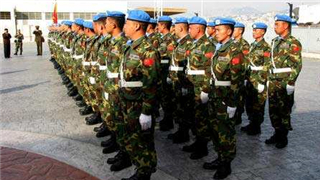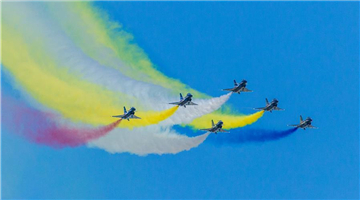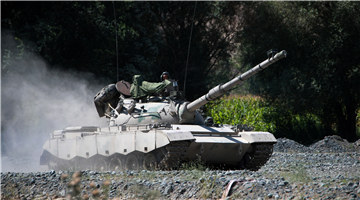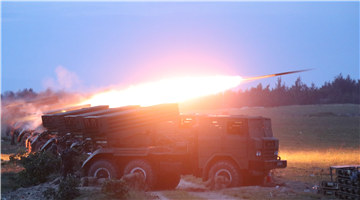By Chen Hanghui
In mid-August 2018, the National Defense Authorization Act (NDAA) for Fiscal Year 2019 was signed by US President Donald Trump and officially went into effect. As the first NDAA promulgated following the newly released National Defense Strategy (NDS), the NDAA for Fiscal Year 2019 has specially allocated US$716.3 billion military spending, and made adjustments in military policies, the setup of national defense organs, and foreign military relations. These changes signal the new mindset and measures of the US to build up its military and advance war preparedness against the background of strategic competition between major powers.
Developing overwhelming strengths by both increasing combat readiness and preparing for future war
No involvement in a fair combat is the strategic guideline of the US military for military development and war preparedness. Within a period of time after the Cold War (1947-1991), the US military once had incomparable advantages. After the September 11 attacks in 2001, the US military has been bogged down in the global war on terrorism. Especially since 2012, the US defense budget had been declining for successive years, which reduced the strengths of the US military. To reverse such a trend, the NDAA for Fiscal Year 2019 adopted a US$716.3 billion military spending bill, of which US$639 billion is the basic defense budget for army building, up by 22% over fiscal year 2017.
According to William Thornberry, chair of the US House of Representatives Committee on Armed Services, restoring the level of war preparedness is the main purpose of the NDAA for Fiscal Year 2019. It will significantly increase the training funds for all services and arms, and allocated US$21.8 billion for equipment maintenance to ensure the combat readiness of all weapons and equipment. In addition, the 2019 NDAA emphasizes the quarterly combat readiness reporting system, requiring commanders of all theater commands to give detailed reports on their combat readiness for integrated joint operations by army, navy, air force, space force and cyber warfare force.
The 2019 NDAA supports the US military to accelerate its purchases of new-type equipment and increase its investments in future technology to win “tomorrow’s war”. The US Army will advance its brigade combat team (BCT) modernization programs, which involve the purchase of 135 new-type Abrams main battle tanks (MBT), 60 Bradley infantry fighting vehicles (IFV), 197 armored multi-purpose vehicles (AMPV), and 3,390 joint light tactical vehicles (JLTV). The US Navy will spend US$24.1 billion purchasing 13 new warships, including 2 Virginia-class fast-attack submarines and 3 littoral combat ships (LCS). The US Air Force will purchase 77 F-35 fighter jets.
The 2019 NDAA also encourages the US military to advance its weapon R&D targeting opponents’ weak points, such as Columbia-class nuclear-powered submarines and B-21 long-range strike bombers. It will fully fund US$150 million for developing the US military’s conventional prompt strike capability. Particularly, the 2019 NDAA will add US$1.2 billion funds for the R&D of supersonic speed, artificial intelligence (AI), and directed energy (DE) technologies, to maintain the US military’s long-term competitive advantages.
Improving combat effectiveness by military buildup and staffing optimization
To reduce deployment frequency caused by insufficient number of troops, the 2019 NDAA will increase 15,600 US forces in active service, adding the total number to 1.3381 million. This is the second arms expansion of the US for two successive years, which is consistent with Trump’s plan on rebuilding the US military. However, compared with the size of last year’s troop increase, this figure is not catching. Staffing optimization, other than military buildup, is the true highlight of the 2019 NDAA.
The US believes that talent is the biggest asymmetrical advantage of a military force. Summarizing the experience and lessons from the Gulf War (1990-1991), the US military has reached a conclusion: “The gap between the US and Iranian militaries mostly lines in personnel qualities and combat theories, in addition to weapons and equipment.” To attract, train, and maintain outstanding professionals, the 2019 NDAA has issued a sequence of staffing reform measures.
First, greatly increasing staff wellbeing. In fiscal year 2019, the US military will raise the basic salaries of its staff by 2.6%, the biggest increase over the last nine years. Accordingly, their basic living allowances and basic housing allowances will increase by 3.4% and 2.9%. Other wellbeing policies include increasing the coverage of special salaries and bonuses, improving housing conditions of military households, and supporting the employment of military dependents by US federal agencies.
Second, adjusting officers’ promotion system. The 2019 NDAA will change the conventional model of promotion in the military (either promotion or retirement), allowing service life extension for officers serving in certain fields and abandoning mandatory retirement after two failures in promotion evaluations. The 2019 NDAA will change the tradition of promotion based on seniority, allowing promotion evaluation committees to adjust promotion rankings according to performance. The 2019 NDAA will diversify officers’ professional development approaches, allowing pilots, cyberwar officers, and other specialized professionals to continue the work in their own fields.
Third, tightening discipline. The 2019 NDAA requires the US Department of Defense (DoD) to increase effort to combat sexual assault and protect victims, to establish a centralized supervision mechanism for crimes by military staff, and to improve information sharing with the US Federal Bureau of Investigation (FBI) to ensure the recording of crimes by military staff into FBI’s weapons ban database.
Focusing on Indo-Pacific and Europe by adjusting garrisons and rebuilding alliances
According to the NDS promulgated in January 2018, the current national security threats of the US have a “4+1” pattern: China and Russia are its major opponents, followed by DPRK and Iran, and terrorism lastly. The newly released NDS identified Indo-Pacific and Europe as two major theater commands that require priority in defense resource supply. To put in place the new NDS, the 2019 NDAA has authorized a number of corresponding measures towards Indo-Pacific and Europe.
Concerning the Indo-Pacific theater command, the 2019 NDAA requests that the US Department of Defense shall maintain its garrison size in this region, and shall not reduce its garrison troops in South Korea without the approval of the US Congress. The 2019 NDAA supports joint military drills with Japan and Australia to enhance security cooperation. It also encourages building new partnership, by renaming “Southeast Asia Maritime Security Initiative” into “Indo-Pacific Maritime Security Initiative” that included India as a member state, and by providing military aid to Bangladesh and Sri Lanka to improve the maritime control capacity of countries within the region.
Concerning the European Theater of Operations, United States Army (ETOUSA), the 2019 NDAA, based on the European Deterrence Initiative, will allocate US$6.3 billion to strengthen multilateral security cooperation with North Atlantic Treaty Organization (NATO) allies and European Union (EU) partners, and enhance defense against Russia. This number is almost two times that of fiscal year 2017.
The 2019 NDAA will reverse the trend of reducing US garrison troops in Europe, and enhance the US military presence in the European Theater of Operations by increasing one combat aviation brigade (CAB) and some service units (SUs). The 2019 NDAA has proposed to improve the strategic preset of weapons and equipment by purchasing PAC-3 Missile Segment Enhancement (MSE) missiles, Javelin anti-tank guided missiles, and 155 mm howitzers. The 2019 NDAA will authorize a two-year extension of effectiveness for the Ukraine Security Assistance Initiative, which will provide US$250 million worth of weapons and equipment, including lethal weapons, to Ukraine.
On the whole, the NDAA for Fiscal Year 2019 has pointed out the direction and approaches for the future military reform and military strength escalation of the US. It also reflects a resurgence of the Cold War mentality in the US government.
(The author comes from Chinese PLA Nanjing Army Command College)











